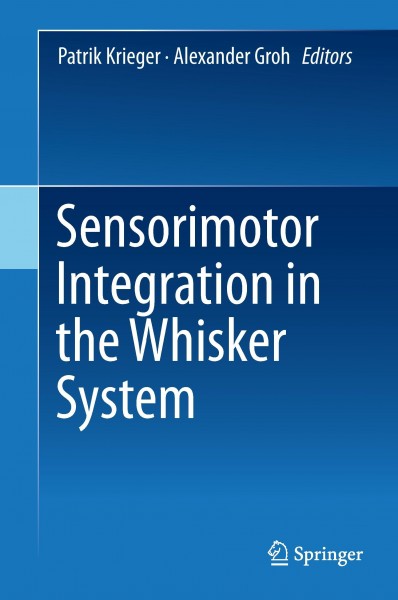
Sensorimotor Integration in the Whisker System
Kurzinformation
inkl. MwSt. Versandinformationen
Artikel zZt. nicht lieferbar
Artikel zZt. nicht lieferbar

Beschreibung
Sensorimotor integration, the dynamic process by which the sensory and motor systems communicate with each other, is crucial to humans¿ and animals¿ ability to explore and react to their environment. This book summarizes the main aspects of our current understanding of sensorimotor integration in 10 chapters written by leading scientists in this active and ever-growing field. This volume focuses on the whisker system, which is an exquisite model to experimentally approach sensorimotor integration in the mammalian brain. In this book, authors examine the whisker system on many different levels, ranging from the building blocks and neuronal circuits to sensorimotor behavior. Neuronal coding strategies, comparative analysis as well as robotics illustrate the multiple facets of this research and its broad impact on fundamental questions about the neurobiology of the mammalian brain. von Groh, Alexander und Krieger, Patrik
Produktdetails

So garantieren wir Dir zu jeder Zeit Premiumqualität.
Über den Autor
Patrik Krieger received his Ph.D. from Karolinska Institutet and then worked as a postdoctoral fellow with Bert Sakmann at the Max Planck Institute, Heidelberg. He is currently Head of the Department of Systems Neuroscience at the Ruhr-University Bochum. His research spans over both sensory and motor systems aiming to provide an understanding of how both systems interact during sensory-guided behavior. This research is done using a combination of electrophysiology and behavioural experiments where the activity of genetically labeled cell types has been modified to reveal the cell type specific contributions to sensorimotor integration. Furthermore, his research includes studies on the impact of sensory deprivation and cortical plasticity on tactile information processing. In addition he works on developing analytical tools for quantitative analysis of neuroanatomy. Alexander Groh received his Ph.D. from the University of Heidelberg and worked as a postdoctoral fellow with Bert Sakmann at the Technische Universität München. His research focuses on the thalamocortical system, which he studies to understand cognitive functions, in particular sensory and motor processing. He is specifically interested in cortical feedback connections to the thalamus, and their role in controlling the flow of information through thalamocortical circuits. After characterizing the synaptic physiology and adaptation of corticothalamic "driver" pathways in the rat whisker system, he applied cell-type specific approaches to characterize the impact of cortical feedback pathways on sensory processing the thalamocortical system. He currently develops methods to explore the functions of corticothalamic interactions in behavior.

- hardcover
- 416 Seiten
- Erschienen 2003
- Springer

- Gebunden
- 264 Seiten
- Erschienen 2009
- Springer

- Kartoniert
- 392 Seiten
- Erschienen 2007
- Springer

- hardcover
- 318 Seiten
- Erschienen 2008
- Cambridge University Press

- hardcover
- 969 Seiten
- Erschienen 2025
- Springer

- Kartoniert
- 780 Seiten
- Erschienen 2017
- Springer

- Gebunden
- 373 Seiten
- Erschienen 2019
- Springer

- Hardcover -
- Erschienen 2017
- Springer

- hardcover
- 307 Seiten
- Erschienen 2000
- Springer

- Kartoniert
- 481 Seiten
- Erschienen 2012
- Fischer, Harald

- hardcover
- 486 Seiten
- Erschienen 1998
- Harvard University Press

- Hardcover
- 256 Seiten
- Erschienen 2023
- Wiley-Scrivener

- hardcover
- 338 Seiten
- Erschienen 1991
- John Wiley & Sons Ltd

- Gebunden
- 240 Seiten
- Erschienen 2016
- Springer

- hardcover
- 208 Seiten
- Erschienen 2023
- Wiley-ISTE

- Gebunden
- 471 Seiten
- Erschienen 2013
- Springer

- paperback
- 128 Seiten
- Erschienen 2013
- Springer




























